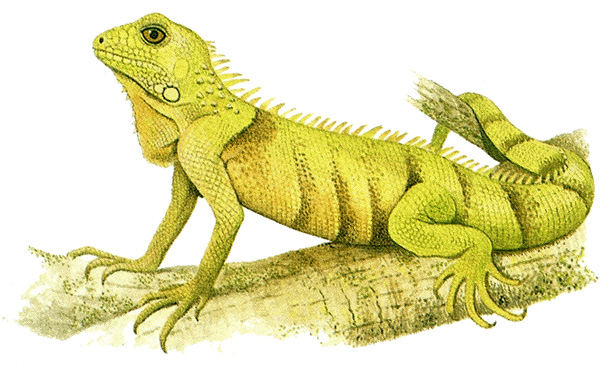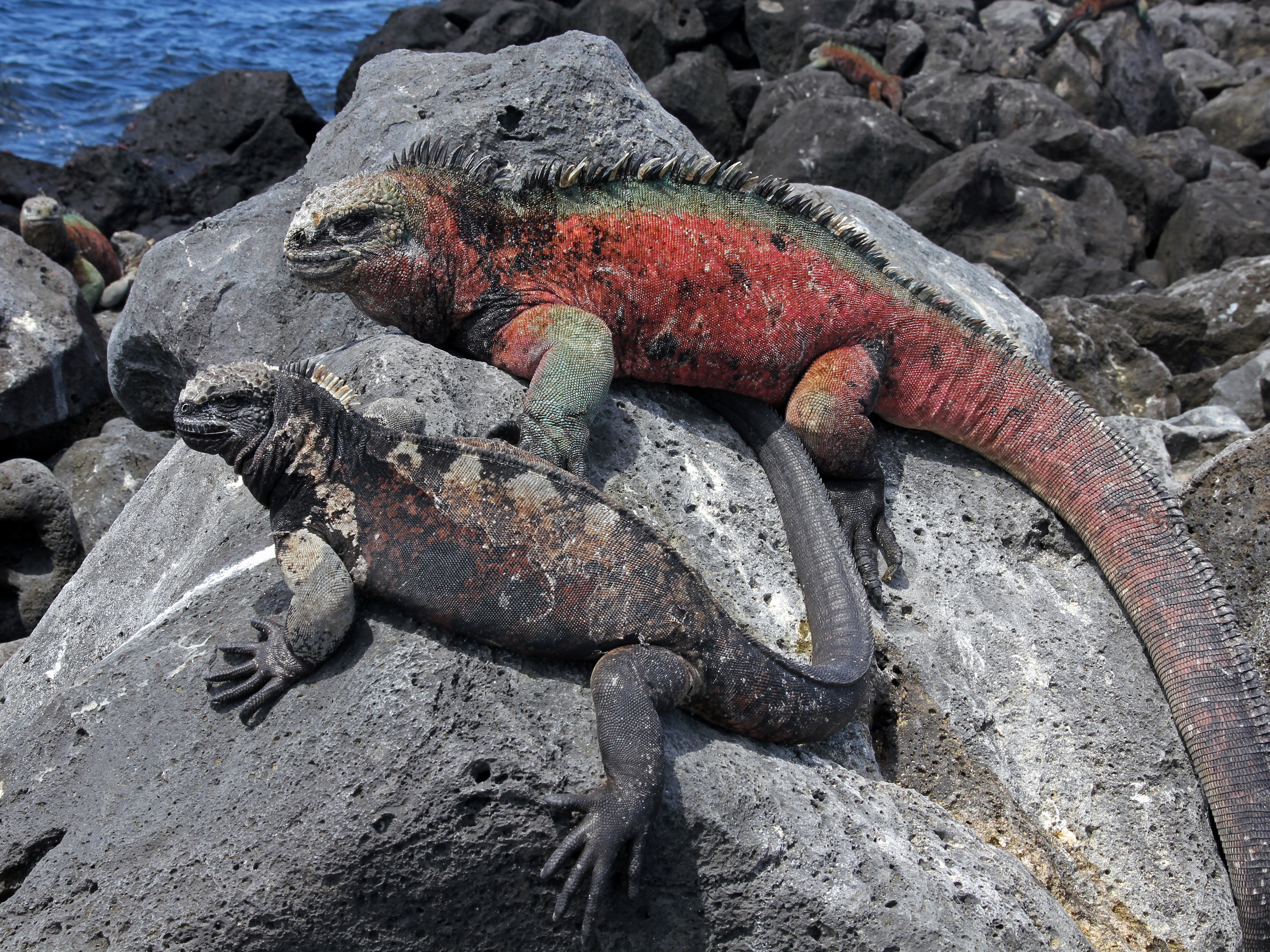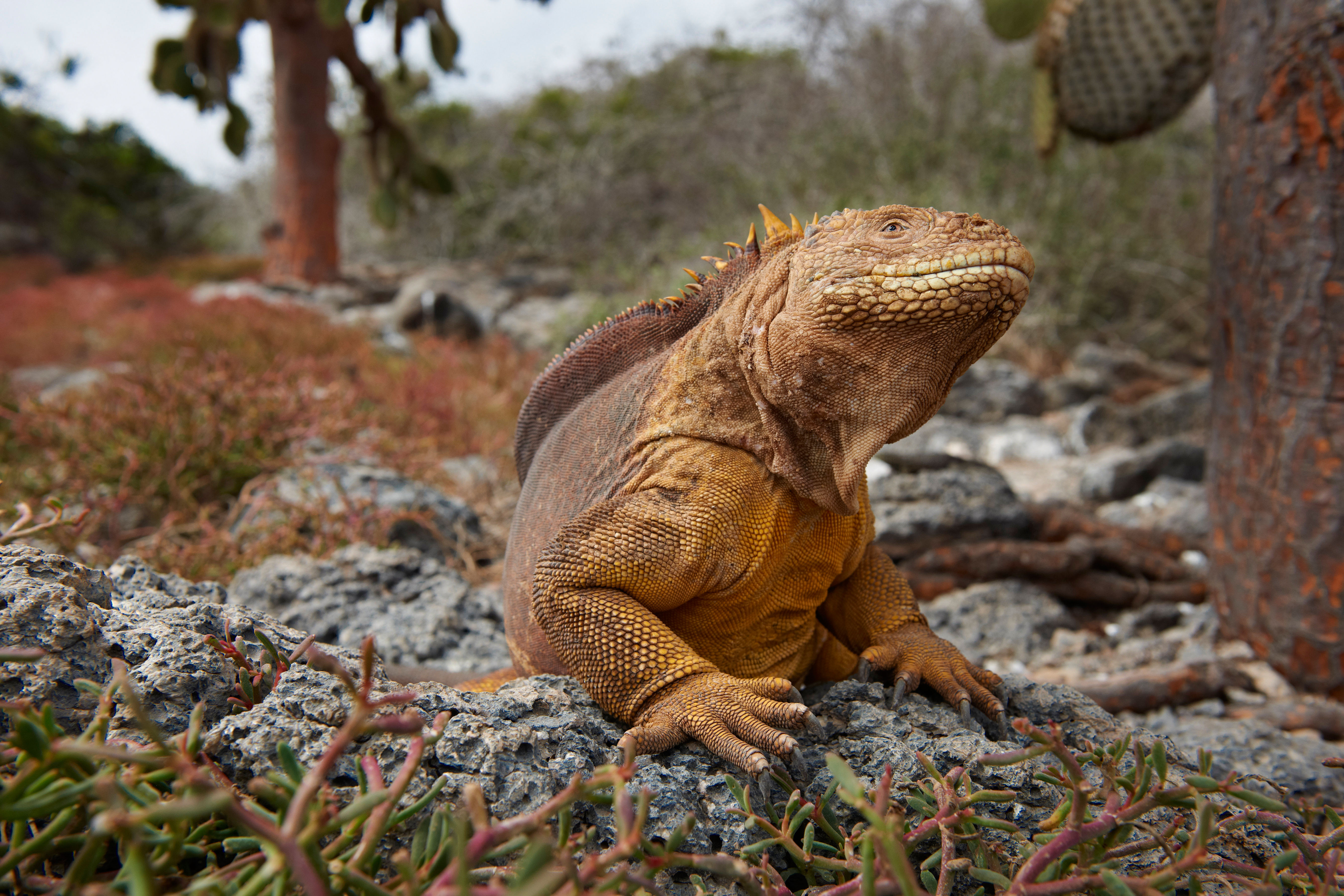Iguana, << ih GWAH nuh, >> is the name of certain lizards found mainly in the Western Hemisphere. Most iguanas live in deserts or other dry habitats, but a few species live in tropical rain forests. All iguanas are active during the day and sleep at night.

The green iguana, also called the common iguana, is found from Mexico to southern Brazil and Paraguay. Green iguanas may grow to 6 feet (1.8 meters) in length. These iguanas have a large flap of skin called a dewlap at their throat and a crest of scales along their back and long tail. Their color ranges from gray to green, with brown bands around the body and tail. Green iguanas and their eggs are often eaten for food. These lizards also are often captured for the pet trade. As a result, green iguanas are in danger of extinction in many areas.
Green iguanas live in trees, especially near water. They typically lie motionless on horizontal branches and rarely move. When attacked by a predator, they leap out of trees and hide underwater. If cornered on land, they use their long tail as a lash.

Iguanas may eat fruits, flowers, leaves, or algae. Most other lizards eat insects. Plants and algae are difficult for most other lizards to digest. An iguana’s digestive system contains certain bacteria that help the animal digest its food. Iguanas are born without these bacteria and possibly obtain them by eating the feces (solid body wastes) of adult iguanas.

All species of iguanas lay eggs. Female green iguanas may travel up to 2 miles (3.2 kilometers) to a suitable nesting site. They then dig a tunnel and bury as many as 75 eggs at the bottom. Females of some species may guard the nest for several days or longer. The young hatch after 10 to 14 weeks and dig to the surface. Newborn green iguanas may leave the nest in small groups, probably for protection from predators. Iguanas grow slowly and may take two years to mature. Some iguanas live for 30 years or more.

The marine iguana and the land iguana live on the Galapagos Islands, which lie off the coast of Ecuador. The marine iguana is the only lizard that lives in the sea. It is found along coastal rocks and dives underwater to search for algae to eat. In the 1990’s, scientists discovered that marine iguanas can shrink in size by as much as 20 percent when food is scarce. The animals’ bones become smaller during these periods. Marine iguanas are the first known vertebrates (backboned animals) to reduce the size of their bones to adapt to a changing environment. The land iguana never goes near water. It eats cactuses and other land plants. Other iguanas include the ground iguana of the West Indies, the spiny-tailed iguana of Mexico and Central America, the desert iguana and the chuckwalla of the southwestern United States and northern Mexico, the Fiji crested iguana of Fiji, and the banded iguana of Fiji and Tonga in the South Pacific.
